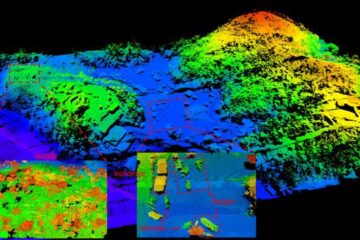Ocean temperatures affect intensity of the South Asian monsoon and rainfall

Warmer or colder sea surface temperatures (SST) may affect one of the world’s key large-scale atmospheric circulations that regulate the intensity and breaking of rainfall associated with the South Asian and Australian monsoons, according to new research from NASA.
A monsoon is a wind that changes direction with the seasons. Monsoons develop from changing patterns of atmospheric circulation which are caused by changes in heating and cooling of land and oceans. One of the strongest and most well-known monsoons is the one which affects India and Southeast Asia in June through September.
The summer monsoon blows southwesterly across the Indian Ocean and is extremely wet. During the summer monsoon, particularly in July, there is usually a break period in the monsoon, when the rains stop and re-start. A phenomenon known as the Madden Julian Oscillation (MJO) has been found to affect that break and the variation of the MJO is affected by the variation of the SSTs.
The MJO is the main fluctuation of atmospheric circulation that explains variations of weather in the tropics and that regulates south Asian monsoons. The variation of the MJO involves variations in wind, SST, cloudiness, and rainfall. The MJO can be characterized by a large-scale eastward movement of air in the upper troposphere with a period of about 20-70 days, over the tropical eastern Indian and western Pacific Oceans at approximately 7.5 miles (200 millibars) high in the atmosphere.
Man Li Wu, a researcher from NASA’s Goddard Space Flight Center in Greenbelt, Md., and lead author of the study, used computer models that simulate the atmosphere in the region. One of the purposes of this study is to examine to what extent intra-seasonal SST variations affect the MJO.
“Changes in SSTs will affect a large scale atmospheric circulation known as the MJO in the area of southern Asia, which regulates the variability of the monsoon,” Wu said. The variation of the MJO coincides with the variation of tropical precipitation over the Indian Ocean and western Pacific Ocean. She noted that from observations the warmer sea surface temperatures are usually found 5 to 10 days before the strengthening of the precipitation on the MJO time scale.
Siegfried Schubert, a co-author on the paper from the Goddard Space Flight Center said that “the MJO plays an important role in the variability of the South Asian monsoons. Changes in SST may be responsible for between 15% and 30% of the fluctuations that occur in the strength of the MJO.”
The ability of current computer models to simulate fluctuations of MJO is still in question. Wu said, “Improvements in predicting the MJO are an important step in making further progress in weather and climate prediction for areas affected by the monsoon. For weather forecasts, improved modeling of the MJO offers hope for extending the range of useful forecasts.” For seasonal and climate prediction, the MJO is a key component.
###
These findings appear in the American Meteorological Society’s October 15th issue of the Journal of Climate, Volume 15, Number 20.
This research was funded under NASA’s Earth Science Enterprises Global Modeling and Analysis Program, dedicated to better understanding and protecting our home planet, and is a contribution to the CLIVAR/Monsoon Global Climate Model Intercomparison project. Support was also provided by the Atmospheric Sciences Division of the National Science Foundation.
Media Contact
All latest news from the category: Earth Sciences
Earth Sciences (also referred to as Geosciences), which deals with basic issues surrounding our planet, plays a vital role in the area of energy and raw materials supply.
Earth Sciences comprises subjects such as geology, geography, geological informatics, paleontology, mineralogy, petrography, crystallography, geophysics, geodesy, glaciology, cartography, photogrammetry, meteorology and seismology, early-warning systems, earthquake research and polar research.
Newest articles

A universal framework for spatial biology
SpatialData is a freely accessible tool to unify and integrate data from different omics technologies accounting for spatial information, which can provide holistic insights into health and disease. Biological processes…

How complex biological processes arise
A $20 million grant from the U.S. National Science Foundation (NSF) will support the establishment and operation of the National Synthesis Center for Emergence in the Molecular and Cellular Sciences (NCEMS) at…

Airborne single-photon lidar system achieves high-resolution 3D imaging
Compact, low-power system opens doors for photon-efficient drone and satellite-based environmental monitoring and mapping. Researchers have developed a compact and lightweight single-photon airborne lidar system that can acquire high-resolution 3D…





















